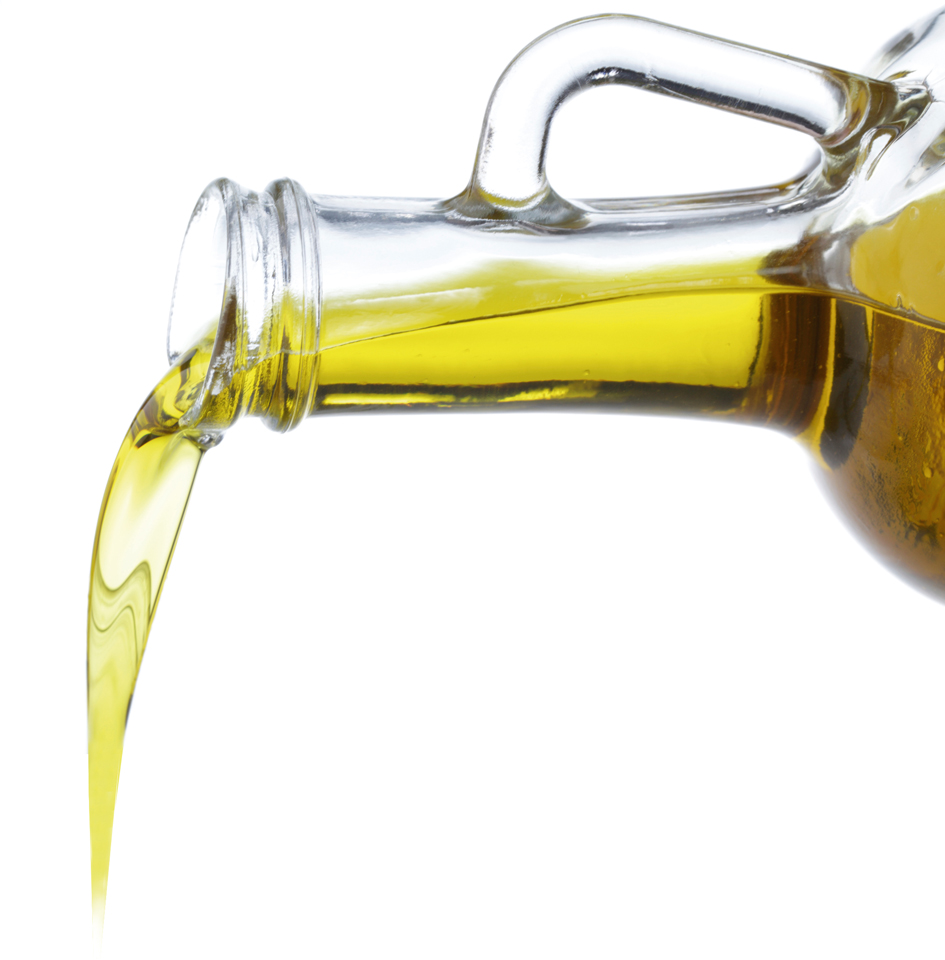You try your best to eat healthy. The kind that read ingredient labels. But are you paying attention to the oil that you are using to cook your food?
When it comes to choosing the best oils in our diets, there are many choices. Did you know that there are a number of mistakes you can make in choosing the healthiest option? Here is a discussion on oils with some information to help you choose more wisely.
What are you using it for?
The first thing to consider is what you will be using the cooking oil for. According to the Cleveland Clinic it is important to know the smoke point of the oil (go to the bottom of this article for smoke points) if you will be heating the oil for cooking. If you heat an oil past its smoke point, it releases toxic fumes and free radicals which are harmful to our health. Free radicals have been shown to cause diseases such as cancer, heart disease, and Alzheimer’s.
Use different oils based on these smoke points. Oils with a high smoke point, such as light olive oil, can be used for browning, searing or pan frying. Oils with a medium-high smoke point, such as coconut oil and sesame oil, can be used for stir-frying, baking and oven-cooking. These are best for lower heat cooking techniques such as light sautéing and making sauces. Some oils should not be heated at all; those include flax seed, wheat germ and walnut oils. These oils can be used as dressings, dips or marinades.
Types of Cooking Oils
Why are some oils more stable while some will oxidize or go rancid more easily? This can occur with or without heat, and when the oxidation occurs, free radicals and harmful compounds may be released. It is important to use and store these oils properly to ensure you are getting the best health benefits from them, and minimizing the health risks of oxidation. Below is a summary of some of these different types of oils:
Coconut Oil
Coconut oil is solid at temperatures less than 78° F, and 90% of its fat content is saturated fat. While saturated fat has had a lot of bad publicity in regards to our health, coconut oil has several health benefits too. The high content of lauric acid within the coconut oil has been found to improve cholesterol and kill bacteria, and slightly boost metabolism as well. This oil has been recently gaining popularity as more of its health benefits are being discovered. You can use virgin coconut oil for most mid-temperature cooking. Read Dr. Ron Sinha’s detailed review on the benefits and limitations of coconut oil here.
Check out a few recipes that use coconut oil:
- Cluster Bean Coconut Ginger Sauté
- Carrot Bean Coconut Sauté
- Zucchini Banana Bread
- Soft Kefir Quinoa Rawa Idli
- Smoky Eggplant Chutney
- Stir Fry Zucchini Noodles
- Zesty Carrot Garbanzo Usli
Extra Virgin Olive Oil
Sometimes called EVOO, olive oil also has numerous health benefits, including improving heart health and blood cholesterol levels. This oil is made without the use of chemicals and harsh refining which allows it to maintains its nutrients and antioxidants. It does have a lower smoke point, which means it is not well suited to frying or cooking at high heat levels. Use cold in salads or as a drizzle.
Personally, I use a very high quality olive oil and use it mostly for dressings for salads, and to top over Mediterranean dishes like Hummus and Baba Ghanoush. As with most things, buy the best that your budget can allow you. Single source olive oils are the best. I’ve traveled through olive producing regions in Turkey, Greece, Spain and Italy and the taste of freshly produced traditional olive oil is a total explosion of the 5 senses.
We have several recipes that use high quality olive oil:
- Fresh Vegetarian Italian Basil Pesto
- Kale-Pear-Turnip-Goat Cheese Salad
- Colorfully Crunchy Strawberry, Grape, Kale Salad
- Baba Ghanoush
- Raw Mango Fenugreek Salsa
- Make Your Own Creamy Smooth Hummus
- Tomato Onion Tadka Raita
Avocado Oil
You guessed right. Avocado oil is produced from the fruit of the avocado tree. Avocado oil is pressed from the fleshy pulp surrounding the avocado pit, making it one of the few edible oils not derived from seed. This pulp produces an oil full of healthy fats, including oleic acid and essential fatty acids. Use avocado oil for high temperature cooking. Avocado oil has a very high smoke point by comparison to other cooking oils. It will not burn or smoke until it reaches 520 F (271 C), which is ideal for searing meats and frying in a Wok. Here are some of our recipes with avocado oil:
- Air Fryer Masala Wada – Lentil Burger Patties & Fritters
- Cabbage Wada: Savory Cabbage Lentil Bites
- Crunchy Baked Plantain Chips
- Crispy, Delicious, Banana Nuggets
Ghee
Ghee is clarified butter and is a popular ingredient in Ayurvedic cooking. It has an aromatic smell and is made by heating butter until it congeals. The aroma is amazing when ghee is freshly made. Although high in fat, ghee is great for cooking and consumption in moderation. Read all about the 4 Unexpected Benefits of Ghee on our blog.
Ghee recipes on our website:
- Uppudu Pindi – Mung & Rawa Upma
- Green Mung Sprouts Curry
- Cracked Wheat Vegetable Upma
- Vegetable Multigrain Khichdi
- Delicious Sooji Upma
- South Indian Brown Rice Khichdi
- Sweet Pongal (Huggi)
- Instant Pot Hyderabadi Chicken Biryani
- Gasagase Payasa (Poppy Seed Kheer)
- Hesarubele (Split Mung) Payasa
- Easy Rasam Recipe
- Sarson Ka Saag
- Delicious Dal Tadka
- Creamy Instant Pot Carrot (Gajar) Halwa
- Date Almond Boats
- Savory Brown Rice Pongal
- Akki-Haalu Payasa (Rice Kheer)
- Doddapatre Tambuli (Karpooravalli Thayir Pachadi)
- Hearty Sarson Pancharatna Dal
- Easy Instant Pot Mashed Potatoes
Now, it is time to talk about oil that you DON’T want to be using in your cooking.
Canola Oil
Have you ever wondered what the word canola means? Canola oil is made from rapeseed oil. Harsh processing is required to create this type of oil. In addition, about 90% of the crops used to make canola oil are genetically modified organisms (GMO’s) bred to be resistant to the herbicide, Roundup. Although it has a good ratio of fatty acids, it is important to consider how this product is derived and make an informed decision as to whether or not it is something you want to consume.
Vegetable and Seed Oils
This category encompasses corn oil, sesame oil, and sunflower oil, to name a few. These are highly refined oils. They are high in Omega-6 fatty acids and recent studies have linked such oils to heart disease and cancer. In the past, many of these oils were considered “heart healthy”, but new research is finding that this is not true. Limiting or avoiding such oils may be best, if possible.
Smoke Points of Cooking Oils
Why is smoke point important? It is because any oil that is heated to higher than its recommended smoking point potentially creates chemicals that are carcinogenic. When oil is heated, it starts to smoke and burn. Not only is this dangerous for health but beneficial nutrients and phytochemicals found in many unrefined oils are destroyed when the oil is overheated. That’s the reason why it is best to use cooking oils based on what you want to cook.
Below are the smoke points of various oils:
| Type of Fat | Smoke Point |
| Avocado Oil (Virgin) | 375-400°F/190-205°C |
| Butter | 350°F/175°C |
| Canola Oil | 400°F/205°C |
| Clarified Butter/Ghee | 450°F/230°C |
| Coconut Oil | 350°F/175°C |
| Corn Oil | 450°F/230°C |
| Extra-Virgin Olive Oil | 325-375°F/165-190°C |
| Grapeseed Oil | 390°F/195°C |
| Light/Refined Olive Oil | 465°F/240°C |
| Peanut Oil | 450°F/230°C |
| Rice Bran Oil | 490°F/260°C |
| Safflower Oil | 510°F/265°C |
| Sesame Oil | 350-410°F/175-210°C |
| Soybean Oil | 450°F/230°C |
| Sunflower Oil | 440°F/225°C |
| Vegetable Oil | 400-450°F/205-230°C |
With the above information, it should be easier to find a cooking oil to suit your purpose. Making an informed decision should keep you healthier. Always look for organic, cold-processed oils.
In my home, I use coconut oil and avocado oil for cooking. I use a high quality olive oil for my salads and marinades. On occasion, I use sesame oil for flavoring Asian dishes.
Do you love our posts and recipes? We’d LOVE to see your creations so click a photo and tag us on Instagram with the hashtag #healthyindian3 and please give a star (★) rating below. Follow us on Facebook, Twitter, Pinterest, Instagram, YouTube & Tumblr for healthy, easy and delicious recipes and lifestyle tips.
*There could be affiliate links in this blog. As an Amazon Associate, we earn from qualifying purchases.



Sometimes it might be hard to find healthy foods but you can always find healthy oils such as cold pressed oils
It takes a little effort, but it is really not hard to make or find healthy food choices, unless one is living in a food desert.
I was searching for information on smoking points of various oils and their health implications. However I feel that the information is not correct or not applicable to India although it says so.
1. Coconut oil is not solid at room temperature in 95% percent parts of India, especially where it is used extensively. It solidifies only maybe a day or two at night in my place during one whole year; and in Ootty and Kodiakanal for an example.
2. 90% saturated fat – I dont think this information is true as well. For most commercially available versions saturated fat content is clearly printed. Its nowhere near 90%. Even for butter and ghee which is supposed to have the highest saturated fat, it is no t near 90%
Please feel free to correct me in case my observations are wrong
Hi Ashley, we love such deeply insightful comments. Thanks for taking the trouble to write. My comments:
1. ‘Room temperature’ is a huge variable. Here, in the US, many of us live in climate-controlled environments, where the ‘room’ temperature is usually set under 75 degrees Fahrenheit. True organic, raw coconut oil solidifies if temperatures falls below 76 °F or 24 °C. My coconut oil is mostly solid (or semi-solid at best) all year round. I’ve changed the verbiage in the blog post to reflect this.
2. Coconut oil is 100% fat, 80-90% of which is saturated fat. You can refer to several sources online. I’ve quoted a reliable one here: https://www.hsph.harvard.edu/nutritionsource/food-features/coconut-oil/
Hope this helps.